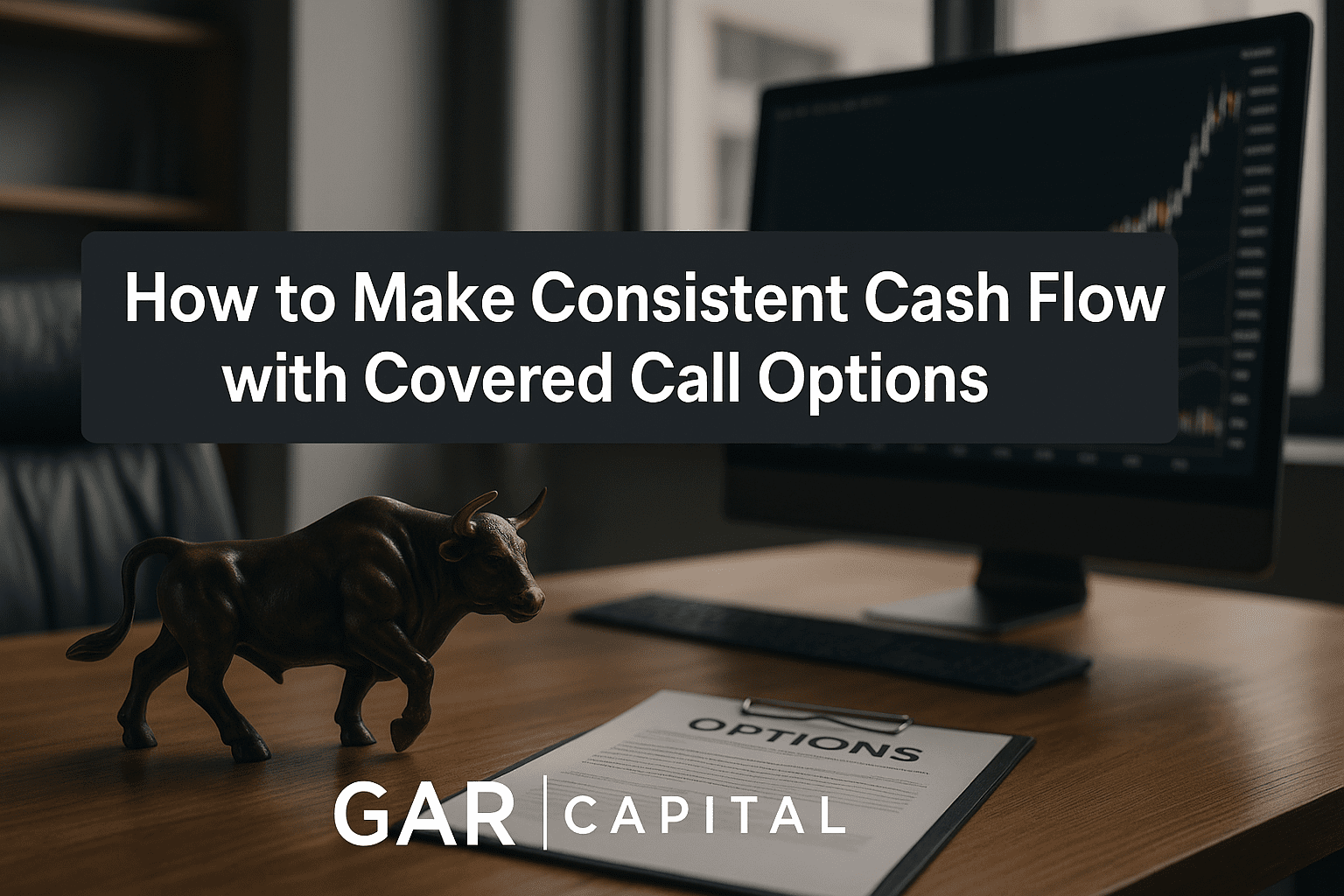Summary
Covered calls involve selling call options on stocks you already own, earning premiums for giving others the right to buy your shares. This can generate steady income — about $10,400/year from 200 shares at $100 — with no debt or property headaches. Risks include capped upside, share price drops, and volatility.
Market Movers
- 📈 US PPI PRODUCER PRICE INDEX: Aug 14, 2025
- 📈 US RETAIL SALES: Aug 15, 2025
📚 Deep Dive 📚
💰 Covered Call Strategy: The “Stock Real Estate” Approach to Consistent Weekly Income
Many investors believe the only way to profit in the stock market is to “buy low, sell high.” But there’s another, more predictable way to make money — covered calls.
This simple strategy lets you collect steady weekly income just for owning shares, even if the stock barely moves.
📈 Step-by-Step: How Covered Calls Work
1. Own the Shares
You must own at least 100 shares of a stock to sell a covered call.
Example: 200 shares of a $100 stock = ~$20,000 investment.
2. Sell Call Options Against Your Shares
A covered call means selling someone the right — not the obligation — to buy your shares at a set price (strike) by a set date (expiration). In return, you receive a premium.
3. Collect Premiums
If you sell a weekly call option for $1 per share:
- $100 per contract × 2 contracts = $200/week in income
- That’s ~$800/month — and you still own your shares.
4. Repeat & Compound
If the stock stays under your strike, you keep your shares and keep selling calls weekly. Over time, reinvest premiums into more shares to grow your position and income potential.
🏠 Why Not Just Buy Real Estate?
With $20,000, many think about putting it toward a rental property — but here’s the difference:
- Real Estate: Long-term debt, property taxes, maintenance costs, vacancies, and tenant headaches.
- Covered Calls: No loans, no property issues, weekly cash flow, and the ability to sell your shares instantly.
In real estate, leverage means borrowing money. With covered calls, your leverage is the shares themselves generating recurring income.
⚠ Risks to Know
- Capped Upside: If the stock rallies above your strike, you may have to sell at that price — missing larger gains.
- Stock Decline: If the stock falls, premiums help cushion losses but won’t erase them.
- Volatility: Higher volatility means higher premiums — but also bigger price swings.
📊 The Yearly Math
If you earn $200/week on 200 shares:
- Weekly: $200
- Monthly: ~$800
- Yearly: ~$10,400 in premiums alone
That’s a 52% cash-on-cash return — before counting potential stock appreciation or dividends.
✅ Bottom Line:
Covered calls turn your stock portfolio into an income machine — delivering consistent cash flow without landlord headaches, while keeping flexibility to adjust as your goals change.
See you on the Trading Floor - Carlos G.


